Doctor Who Season 21 marked the end of an era, and was truly a turning point in the series’ history…
By the time Doctor Who Season 21 came around, the show was riding high on the success of its 20th anniversary celebrations – something of a seismic event in the Whoniverse which highlighted just how beloved the series really was.
But behind the scenes, the picture was less pretty. The tide was turning against Doctor Who within the upper echelons, and Doctor Who Season 21 really was the last time the production team, and its cast, were kept out of the firing line. Let’s take a look back at some of the stories which made up this classic season – the last to feature the Fifth Doctor, Peter Davison…
Warriors of the Deep
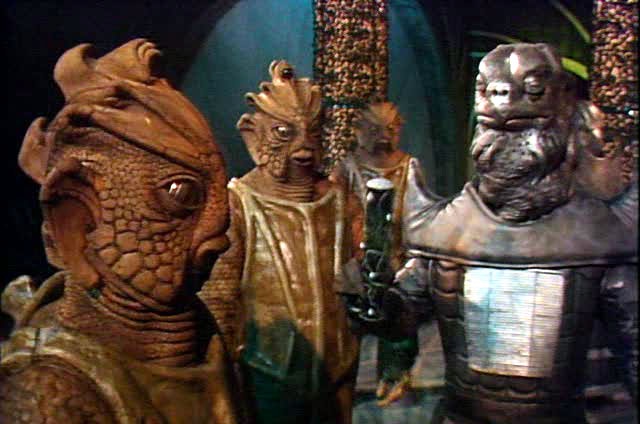
The opening adventure of Doctor Who Season 21 saw the return of the Silurians and the Sea Devils to the Whoniverse after more than a decade, and whilst their reappearance was welcome, it’s fair to say that ‘Warriors of the Deep’ wasn’t the best-received Doctor Who story.
Indeed, one thing the show will always be haunted by is the unfortunate scene in which the character of Solow comes up against the fearsome Myrka creature – if ‘fearsome’ is the right word. Certainly, it isn’t the most impressively-realised monster in Whoniverse, but the fact that Solow chooses to fight the Myrka with some questionable kung-fu does give the moment an unintentionally comical air.
The Awakening
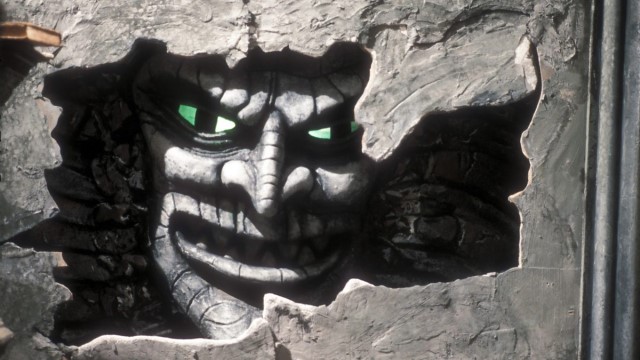
Two-part stories had become more commonplace during the John Nathan-Turner era, and ‘The Awakening’ continued this tradition in Doctor Who Season 21 with a story which had echoes of the 1971 classic ‘The Daemons.’ This brief but gripping adventure from Eric Pringle was all about a creepy village in contemporary England, whose inhabitants had become obsessed with war re-enactments which, inadvertently, were awakening a psychic evil nestled within the ruins of a church.
There are many highlights to this story (the guest appearance of Polly James being one of them) but ‘The Awakening’ also features a subtle nod to an earlier Davison tale, ‘The Visitation.’ Doctor Who fans do love their continuity, and there’s one scene in which James’ character unearths a strange piece of metal, which the Time Lord reveals is from the planet Raaga. And, as everyone knows, Raaga is the mining planet of the dreaded Terileptils.
Frontios
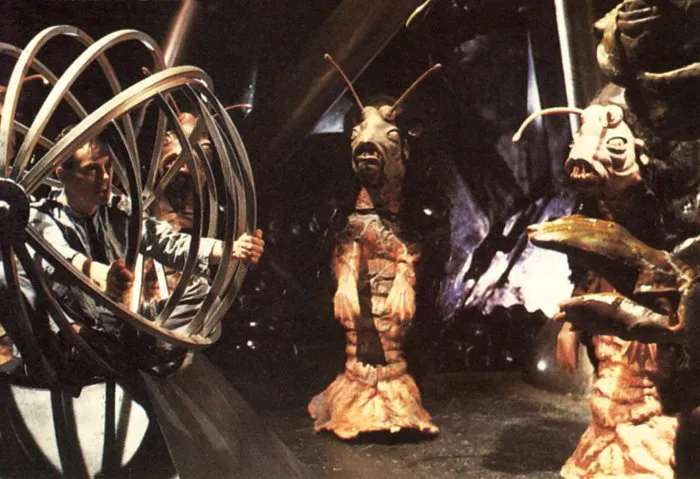
The next story in Doctor Who Season 21 saw the return of former script editor Christopher H. Bidmead to the writer’s chair. This is a gritty, polished-looking outer space adventure featuring the slug-like Tractators – monsters who drag people beneath the earth to use for their own evil ends. It’s chilling stuff.
But perhaps the most memorable moment from ‘Frontios’ is the ending to part one, where the TARDIS is seemingly blown up by a missile. All that remains is the Doctor’s hatstand, and it isn’t until part four that the Time Lord actually discovers his vessel intact, albeit deep beneath the earth and without its police box exterior. The Doctor then has to ‘pull the TARDIS dimensions back together’ in order to fix it. Or something.
This continued a trend in Bidmead’s writing; the author had long been fascinated with the TARDIS as a concept and liked to play around with its workings. See ‘Logopolis‘ and ‘Castrovalva’ for more!
Resurrection of the Daleks
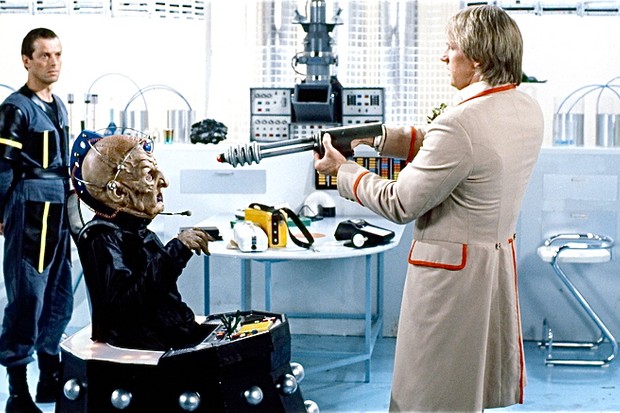
The Daleks weren’t originally meant for Doctor Who Season 21. It was hoped that they would appear in the show’s 20th anniversary season in an explosive adventure called ‘The Return,’ but this was postponed due to strikes at the BBC, and the story was eventually re-worked the following year.
Opinions are divided on this adventure, and its writer Eric Saward has never been shy about his dislike for it. He was always keen to ‘have another go,’ which indeed he did the following year with ‘Revelation of the Daleks.’ It certainly has an astronomically high body count, but it is great to see the return of Davros, and of course the Daleks themselves, who were last seen in 1979’s ‘Destiny of the Daleks’ some five years earlier.
Moreover, you may remember that we said Doctor Who Season 21 marked the end of an era? Well, ‘Resurrection of the Daleks’ saw the first major change with the departure of one of the longest-serving companions – Tegan Jovanka, played by Janet Fielding. She left at the end of the story in a heart-breaking moment, declaring that “a lot of good people have died today,” and that she’s sick of all the killing; she doesn’t feel she can go on. Sniff.
Planet of Fire
There was more change afoot in the next of Doctor Who Season 21’s stories. ‘Planet of Fire’ saw the departure of Turlough and gave him an origin story, and introduced Peri, and re-introduced (and wrote out) Kamelion, and brought back the Master, and seemingly killed off the Master, and (almost) made the Master the Doctor’s brother. And as if this check-list wasn’t enough, writer Peter Grimwade was also asked to write his story in such a way as to facilitate filming in Lanzarote.
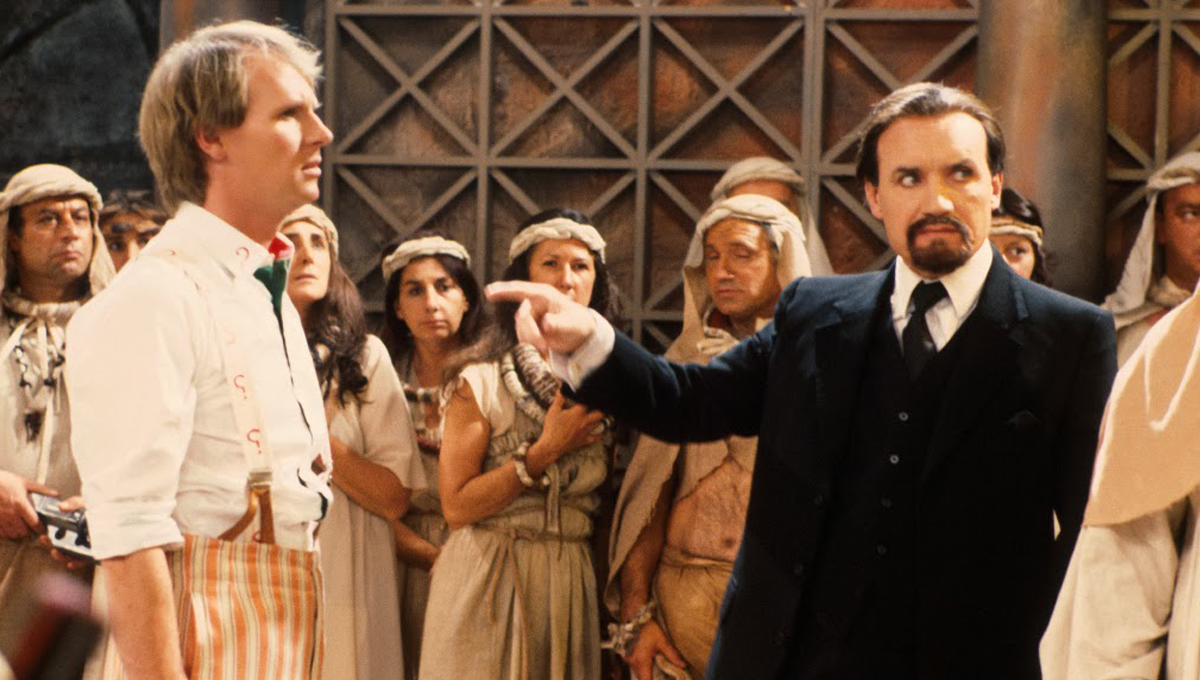
And considering all of the boxes Grimwade had to tick, ‘Planet of Fire’ is actually a rather gripping adventure, and really benefits from its lush location work. You can read more about it here.
The Caves of Androzani
Tegan had gone, Turlough had gone, and now it was time for the final departure of Doctor Who Season 21 – the Fifth Doctor, played by Peter Davison. He had been playing the Time Lord for three years at this point, and had decided during the filming of ‘The Five Doctors‘ that Doctor Who Season 21 would be his last. He claimed that he was helped in his decision by chatting to the former Doctor Patrick Troughton, who told him that three years was the optimum time for the role, and that he shouldn’t aim for an epic, seven year stint like Tom Baker.

Fortunately, Peter Davison’s last story is excellent, and is widely regarded as the best of Doctor Who Season 21, if not one of the greatest Doctor Who adventures of all time. Penned by the long-time Who writer Robert Holmes, it’s a gritty, blood-stained affair, focusing on a bitterly-fought war in a murky cave system beneath the planet Androzani Minor, where no one can be trusted.
But the scene that it will always be famous for is the regeneration, and the first appearance of Colin Baker as the Sixth Doctor, plus the immortal line: “Change, my dear – and it seems not a moment too soon.”
The Twin Dilemma
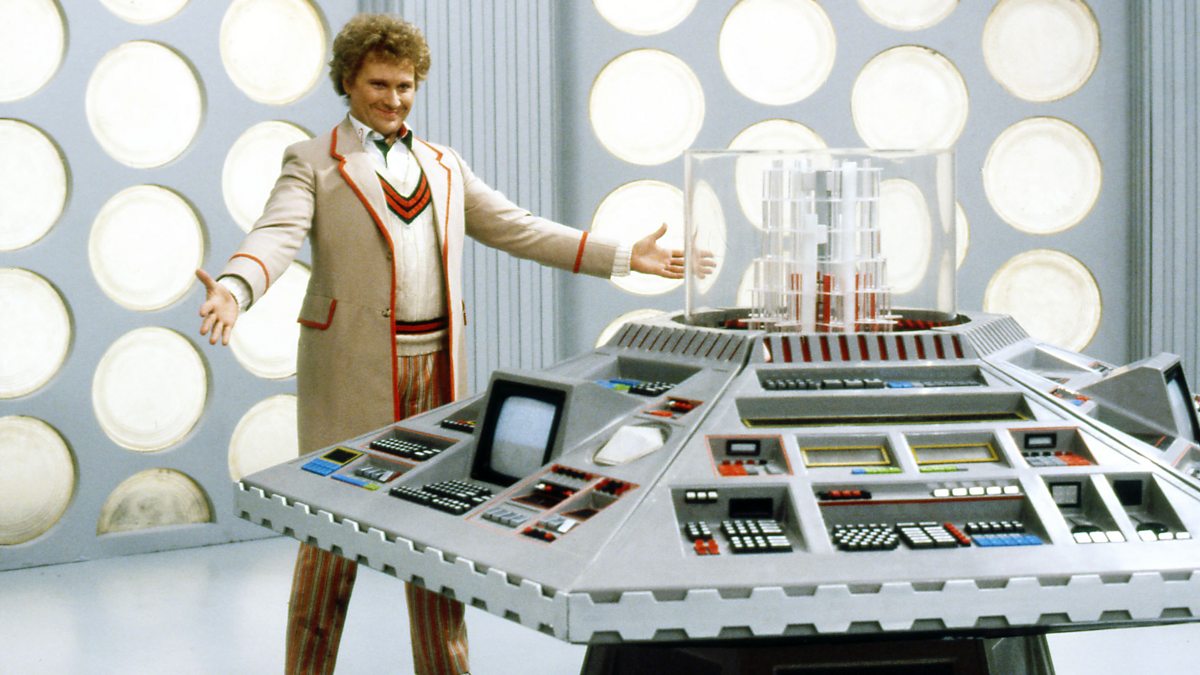
For Doctor Who Season 21, John Nathan-Turner took the brave decision to give Colin Baker a standalone story at the tail-end of the series, as he was keen for the new Time Lord to be firmly established before Doctor Who returned the following year.
There is much to say about ‘The Twin Dilemma’ (most of which you can read about here) but, broadly-speaking, this is perhaps one of the least-liked adventures in the Whoniverse. The most memorable and controversial moment is the scene in which the delirious Sixth Doctor tries to strangle Peri, believing her to be an alien spy.
Love it or hate it, Doctor Who Season 21 was bold and unafraid of taking risks. ‘The Twin Dilemma’ even ended with the Time Lord uttering the prophetic words, “I am the Doctor, whether you like it or not!”
Of course, many people didn’t like it, and this isn’t uncommon when a new Doctor takes over the role. But it didn’t put people off the next season went it landed the following January, with some 8.9 million viewers tuning in for the first episode of ‘Attack of the Cybermen.’
Tell us, what do you think about ‘The Twin Dilemma’? And which is your favourite story of Doctor Who Season 21? Let us know in the comments below.









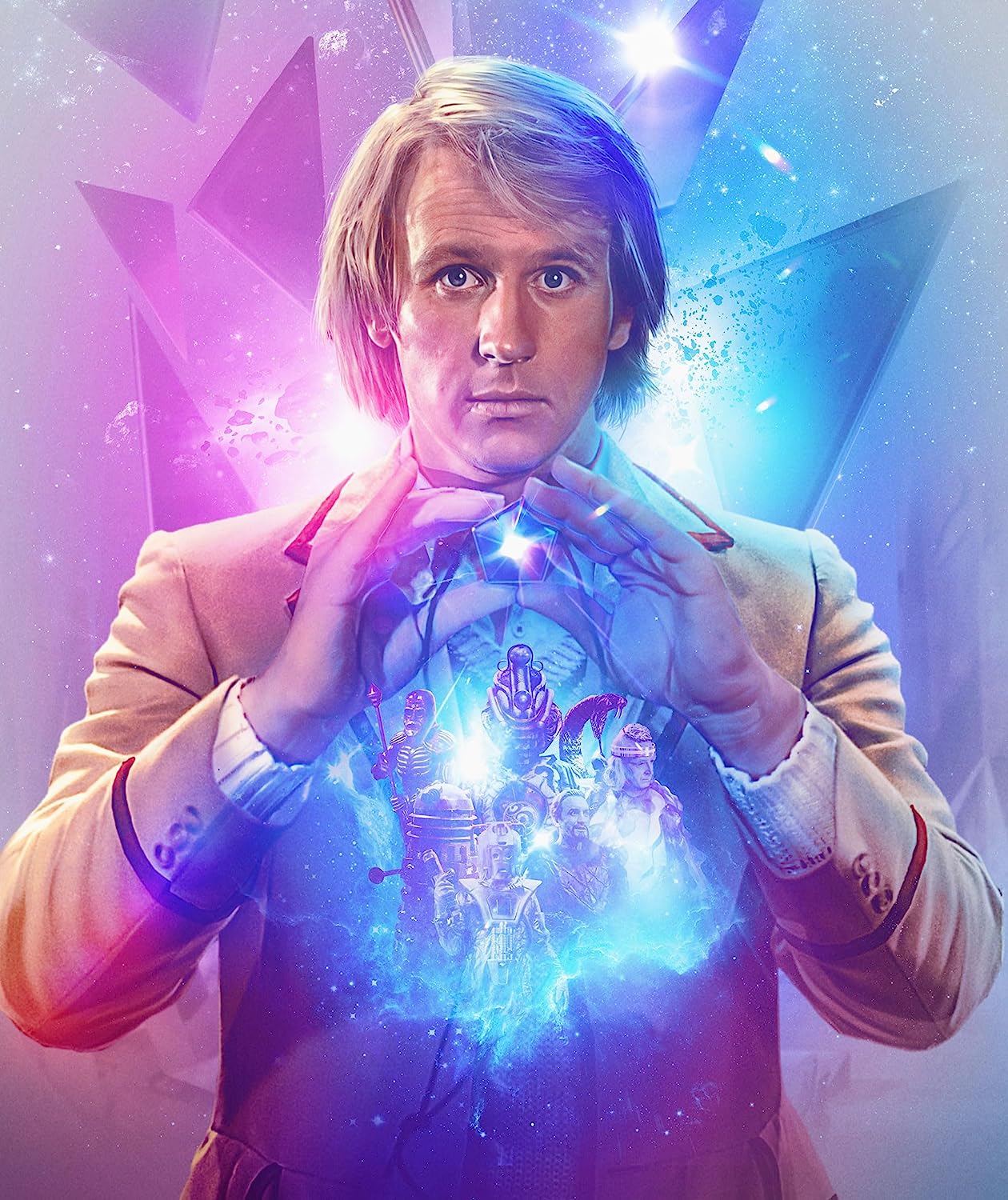
Leave a Reply